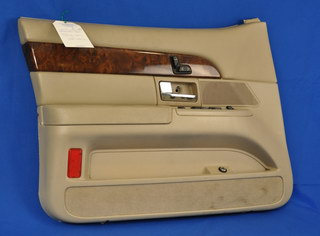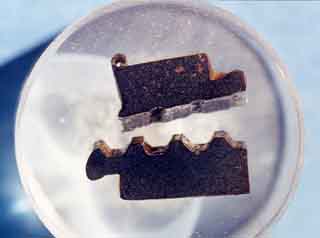The Value of Evidence Handling & Storage
On the Scene E-Newsletter, Edition 105, December 1, 2009
 Spoliation of evidence can be the silent killer in litigation. The strongest cases lose their validity when critical evidence or opinions based on evidence are thrown out of court due to improper or negligent handling of the evidence. Proper procedure starts with the initial capture and labeling of evidence and inspected exemplars (exemplars become evidence when they are inspected by an expert and bring critical information to a case) and continues through the entire chain of custody.
Spoliation of evidence can be the silent killer in litigation. The strongest cases lose their validity when critical evidence or opinions based on evidence are thrown out of court due to improper or negligent handling of the evidence. Proper procedure starts with the initial capture and labeling of evidence and inspected exemplars (exemplars become evidence when they are inspected by an expert and bring critical information to a case) and continues through the entire chain of custody.
The American Society for Testing and Materials (ASTM) defines standard practices for Collection and Preservation of Information and Physical Items by a Technical InvestigatorReceiving, Documenting, Storing, and Retrieving Evidence in a Forensic Science Laboratory (E1492-05), and Examining and Preparing Items that are or may Become Involved in Criminal or Civil Litigation (E860-07). When evidence is first gathered or received, it must be labeled, tagged, logged, and stored in a secure place. This begins the chain of custody, which is documented with paperwork and signatures whenever the evidence transfers possession. When evidence is stored, procedures for routine maintenance of the contents of the evidence storage area must be followed. When evidence is tested, ASTM standards should be followed to avoid charges of spoliation. It is also a good idea to document those present for all testing. If evidence is to be returned, a transfer letter with appropriate signatures should be created. Finally, if evidence is to be disposed of or destroyed, written documentation providing authorization should be obtained from all parties in the litigation. (E1188-05),
Oftentimes, engineering experts are involved with evidence handling and storage. Whether they are a first responder to an accident scene or later involved during multi-party inspections, they must be familiar with evidence handling protocols. The qualified expert will log the evidence collected, ensure safe handling and storage, and initiate the chain of custody documentation if possession transfers to another. The engineer may again be involved when evidence is tested or destroyed, providing the required documentation.
CED Investigative Technologies offers storage facilities to clients who require case evidence and exemplars to be stored. Our storage facilities ensure that all evidence and materials are stored properly and in compliance with ASTM standard.






